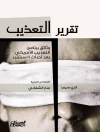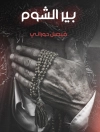In ‘Australian Legendary Tales: folk-lore of the Noongahburrahs as told to the Piccaninnies, ‘ K. Langloh Parker presents a rich tapestry of Aboriginal legends, transcribed with care and reverence. Through her meticulous narrative style, Parker captures the oral tradition of the Noongahburrah people, showcasing a vibrant array of mythical tales that illuminate their cultural worldview. The book serves as both a literary artifact and a valuable document of Indigenous Australian heritage, reflecting the thematic concerns of nature, spirituality, and ancestral connections in an era that sought to record and preserve such traditions before they vanished under colonial pressures. K. Langloh Parker, an informed ethnographer and passionate advocate for Aboriginal culture, was deeply influenced by her interactions with Indigenous communities in the 19th century. Her firsthand experiences and respect for Aboriginal customs facilitated her unique role in documenting these narratives. She both cherished and sought to share the rich folklore of the Noongahburrahs, which was often overlooked by mainstream literary circles, thus providing a platform for Indigenous voices during a turbulent historical moment. This compelling collection is recommended for readers interested in folklore, anthropology, and Australian history. Parker’s work not only serves as a crucial preservation of Indigenous storytelling but also invites reflection on the broader implications of cultural exchange and adaptation. It is essential reading for those wishing to explore the depths of Indigenous wisdom and the storytelling traditions that have shaped the Australian landscape.
Mengenai Pengarang
K. Langloh Parker, born Katherine Langloh Parker in 1856, was an Australian writer best known for her collection of indigenous stories and folklore, notably within her celebrated work ‘Australian Legendary Tales: folk-lore of the Noongahburrahs as told to the Piccaninnies’ (1896). Residing near the Narran River in New South Wales, Parker developed a close association with the local Aboriginal people, which allowed her an extraordinary entry into their oral traditions. She meticulously recorded these tales with a profound respect and care for their cultural significance and authenticity. Her literary style was characterized by an ethnographic approach that sought to preserve the stories in their original form as much as possible, offering readers a genuine insight into Aboriginal mythology and cultural practices. Her work, while criticized at times for being compiled from a colonial perspective, remains a valuable compilation of Aboriginal folklore, and she is credited with being among the first to do so in a time when Indigenous Australian narratives were in danger of being lost. Parker’s dedication to capturing and sharing Indigenous stories has earned her a respected place in Australian literature and the study of folklore. Her contribution to the preservation of Aboriginal tales has provided an essential resource for cultural historians and a wider audience interested in the rich oral traditions of Australia’s First Peoples.












